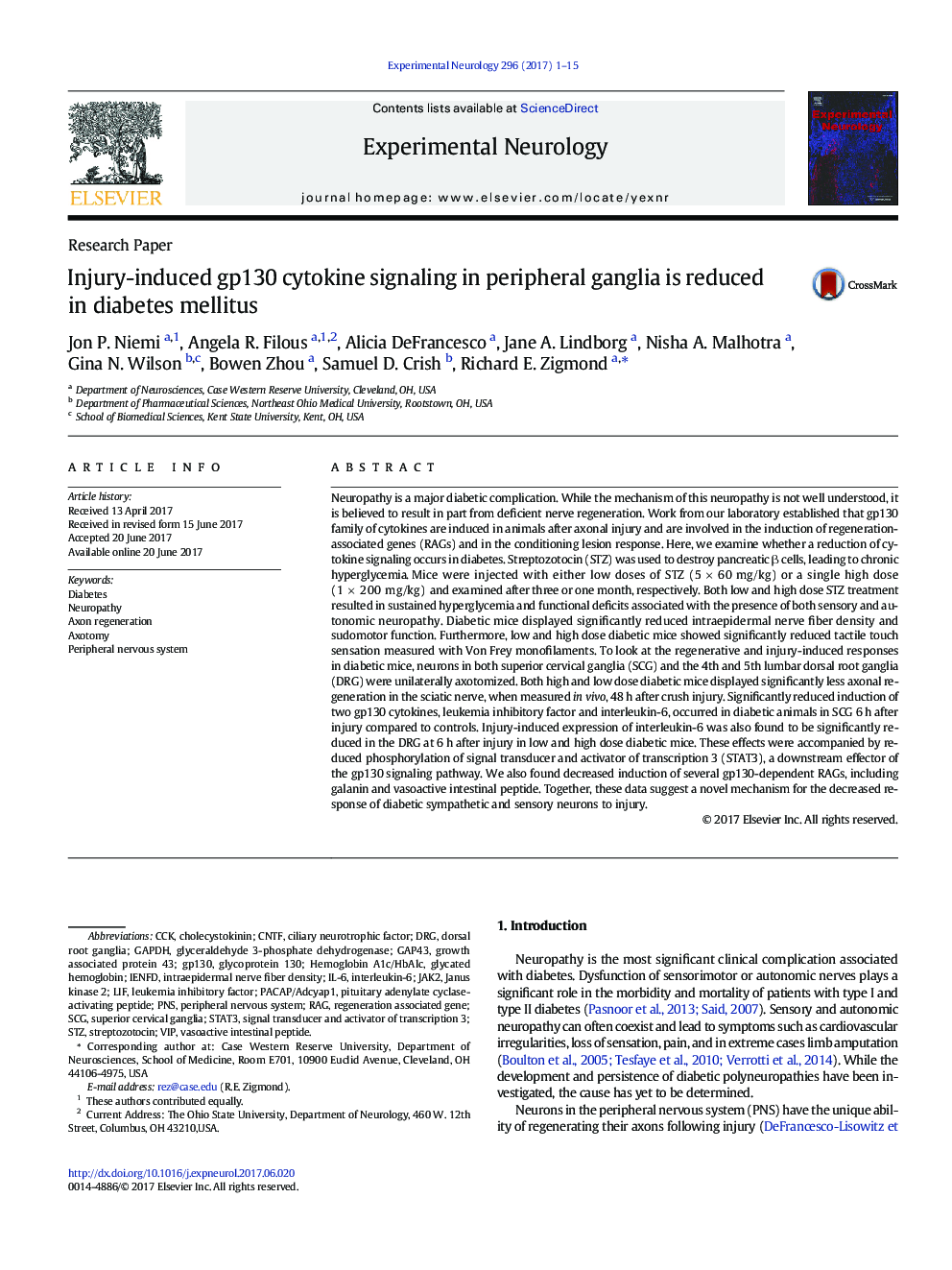| کد مقاله | کد نشریه | سال انتشار | مقاله انگلیسی | نسخه تمام متن |
|---|---|---|---|---|
| 5629130 | 1580143 | 2017 | 15 صفحه PDF | دانلود رایگان |

- STZ mouse models show significant functional deficits associated with neuropathy.
- Low and high dose diabetic mice show inhibited peripheral nerve regeneration.
- Injury-induced gp130 cytokine expression in ganglia is impaired in diabetic mice.
- STAT3 activation is significantly reduced in injured SCG and DRG of diabetic mice.
- Injury-induced neuropeptide expression is altered in diabetic SCG and DRG.
Neuropathy is a major diabetic complication. While the mechanism of this neuropathy is not well understood, it is believed to result in part from deficient nerve regeneration. Work from our laboratory established that gp130 family of cytokines are induced in animals after axonal injury and are involved in the induction of regeneration-associated genes (RAGs) and in the conditioning lesion response. Here, we examine whether a reduction of cytokine signaling occurs in diabetes. Streptozotocin (STZ) was used to destroy pancreatic β cells, leading to chronic hyperglycemia. Mice were injected with either low doses of STZ (5 Ã 60 mg/kg) or a single high dose (1 Ã 200 mg/kg) and examined after three or one month, respectively. Both low and high dose STZ treatment resulted in sustained hyperglycemia and functional deficits associated with the presence of both sensory and autonomic neuropathy. Diabetic mice displayed significantly reduced intraepidermal nerve fiber density and sudomotor function. Furthermore, low and high dose diabetic mice showed significantly reduced tactile touch sensation measured with Von Frey monofilaments. To look at the regenerative and injury-induced responses in diabetic mice, neurons in both superior cervical ganglia (SCG) and the 4th and 5th lumbar dorsal root ganglia (DRG) were unilaterally axotomized. Both high and low dose diabetic mice displayed significantly less axonal regeneration in the sciatic nerve, when measured in vivo, 48 h after crush injury. Significantly reduced induction of two gp130 cytokines, leukemia inhibitory factor and interleukin-6, occurred in diabetic animals in SCG 6 h after injury compared to controls. Injury-induced expression of interleukin-6 was also found to be significantly reduced in the DRG at 6 h after injury in low and high dose diabetic mice. These effects were accompanied by reduced phosphorylation of signal transducer and activator of transcription 3 (STAT3), a downstream effector of the gp130 signaling pathway. We also found decreased induction of several gp130-dependent RAGs, including galanin and vasoactive intestinal peptide. Together, these data suggest a novel mechanism for the decreased response of diabetic sympathetic and sensory neurons to injury.
Journal: Experimental Neurology - Volume 296, October 2017, Pages 1-15